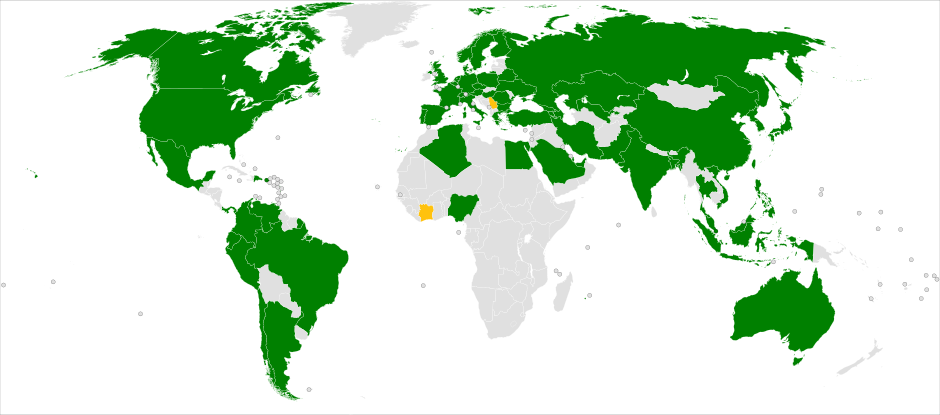Munir hussain shami
FULL MEMBER
New Recruit
- Joined
- Feb 8, 2015
- Messages
- 3
- Reaction score
- 0
- Country
- Location
very good reply from SHAMK9, no thing more to say.
Follow along with the video below to see how to install our site as a web app on your home screen.
Note: This feature may not be available in some browsers.
New Recruit













With trains/buses, traffic on the road reduces. Now I've not been to lahore for quite few years, but I bet that the traffic condition in Lahore is much worse than other cities of Punjab.

Just look at these countries that have a metro rail system and now look at us while being world's 6th largest country....
Haters can go to hell.





Just a friendly advice, do not jump to conclusions.You should come to Pakistan and see the situation on the ground yourself before making statement such as these. Just a friendly advice.

Check out these maps too,




New Recruit

19th-century London
During the 19th century, London was transformed into the world's largest city and capital of the British Empire. Its population expanded from 1 million in 1800 to 6.7 million a century later (1.9% average annual growth). During this period, London became a global political, financial, and trading capital. In this position, it was largely unrivaled until the latter part of the century, when Paris and New York City began to threaten its dominance.
While the city grew wealthy as Britain's holdings expanded, 19th century London was also a city of poverty, where millions lived in overcrowded and unsanitary slums
Coming of the railway
19th century London was transformed by the coming of the railways. A new network of metropolitan railways allowed for the development of suburbs in other counties. London also became home to the first subway system, which laid the foundations for the modern London Underground system.
------------------------------------------------------------------------------------------------------------------------------------------------
Study: Cities can significantly boost their GDP by investing in public transport
Worldwide, major cities stand to gain around $800 billion per year of economic opportunity from 2030 by upgrading their public transportation networks. This is according to a study "The Mobility Opportunity" conducted by London-based consulting firm, Credo, and presented today in Singapore. Commissioned by Siemens, the study looks at transportation networks in 35 major cities around the globe and assesses how prepared cities are to meet future challenges, including population growth and higher competition. The results: If all 35 cities studied would implement relative "best in class" standards, they stand to gain an economic benefit of roughly $238 billion annually from 2030. Extrapolating to all comparably-sized cities globally with a population of around 750,000 and greater, this suggests an economic opportunity of roughly $800 billion annually. This corresponds to about one per cent of global GDP. Today the potential benefit would be about $360 billion per year.
- Study suggests an annual economic opportunity of nearly $800 billion
- Targeted investment in public transport secures cities' attractiveness and competitiveness
- Copenhagen is the most cost-efficient city of the 35 evaluated
Transport is considered one of the major factors of a city's competitiveness. However, lack of financial resources often constrains cities' ability to invest in their transport networks. This study is unique in seeking to put an economic value on the cost of inefficient transport, thus helping cities make the case for investment. Some of the factors considered were journey times, crowding and network density, all of which impact a city's productivity. In order to have a reasonable comparison, the study groups cities into three categories to account for different levels of wealth and development. According to Credo, the most cost-efficient cities are:
Then, Credo compared cities to the leading city in their category. The comparison enabled them to quantify the economic benefits that investments in transport would bring, such as higher productivity and new economic activity. Finally, Credo has developed some key pointers on how cities can realize the potential economic uplift. Case studies show how potential investments can pay off.
- Copenhagen, Denmark (Category "Well-established cities")
- Singapore (Category "High-density compact centers")
- Santiago, Chile (Category "Emerging cities")
"All cities can learn from the leading cities in their category in order to close the gap of their transport networks' efficiency, reduce costs and increase productivity. Because the more efficient a city's transport network is, the more attractive the city is to business and people", commented Chris Molloy, Partner at Credo.
"The best transportation systems are the ones that move people quickly, easily, and comfortably to their destination. The leading cities are already achieving this with efficient transport networks that feature modern infrastructure, easy connections across various modes of transportation, and, above all, a clear strategy of how to meet future needs," said Roland Busch, CEO of the Siemens Sector Infrastructure & Cities and member of the Managing Board of Siemens AG.
Cities are the engines for future growth. They generate 80 percent of global economic output. However, in a globalized economy, with businesses and workforces increasingly able to relocate internationally, they must compete to offer the most attractive environment for economic activity. The study "The Mobility Opportunity" is geared toward city decision-makers around the world so that they may use its recommendations to achieve the greatest economic benefit.
------------------------------------------------------------------------------------------------------------------------------------------------
Back to topic:
This is a Punjab Government Project:
In comparison with other provinces it also continues to lead in other sectors as well.
Punjab leads in quality of governance - thenews.com.pk
Survey puts Punjab ahead of KP in terms of governance
Punjab Leads provinces in Literacy Rate,ICT tops followed by AJK
Daanish Schools - Empowering the Poorest of the Poor through Quality Education
elearn Punjab
http://www.superior.edu.pk/presentation/user/CEET/pdf/research/DevCS/A Study of the Usefulness of Punjab IT Lab Project as perceived by Students javid_qadir123@yahoo.com.pdf
The Punjab Educational Endowment Fund (PEEF)
Lahore Knowledge Park | HIGHER EDUCATION DEPARTMENT
Education takes centre stage in Rs1.4t budget - The Express Tribune
No dengue patient reported in Punjab: Salman
Punjab Government Launches Solid Waste Management Program in 6 Cities
Eradicating polio: ‘No polio patients reported in Punjab this year’ - The Express Tribune
Rs 50 billion to be spent on Saaf Pani Project: Shahbaz
Rs166 billion to be spent on Health in Punjab
Life line: Health Insurance Scheme this year - The Express Tribune
Punjab govt spending Rs15 billion on rural road infrastructure Pakistan Times
Punjab doubles agricultural development outlay over FY14 - Newspaper - DAWN.COM
Bahawalpur to have $1.5bn world’s largest solar power plant - Pakistan - DAWN.COM
Punjab ahead of other provinces in anti-terror steps - Pakistan - DAWN.COM

Metro station become swimming pool after recent heavy rain in punjab
